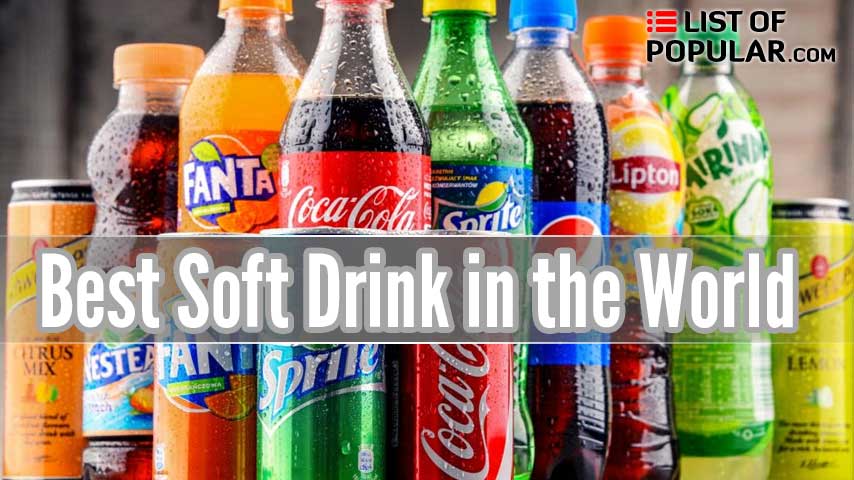1. Gold Spot
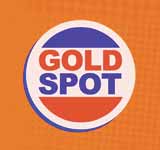
Gold Spot was one of the three brands of carbonated soft drink started in India by Parle Bisleri. Gold Spots in India, Coca-Cola and PepsiCo's founder Ramesh Chauhan under the initiative of the Indian market in 1977 after leaving India at Parle Bisleri was initiated by one of the three carbonated soft drinks. Introduced with Gold Spot, Thums Up and Limca. Artificially flavored and colored. Parle, Thums Up, Limca, Bovonto, Citra and Maaz in conjunction with Coca-Cola in 1993 (beginners in the Indian market) has sold Gold Spot. Despite its wide popularity, Coca-Cola's Fanta Gold Spot was withdrawn by Coke to make room for the brand again.
2. Mountain Dew
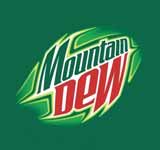
Mountain Dew is a citrus soda manufactured by the PepsiCo Company. It was initially promoted in 1948 only in the state of North Carolina, in the United States. Since 1964 he did it throughout that country. Its name comes from Mountain View, one of the best known places in California. Mountain Dew is frequently criticized by health experts because of its high caffeine content (and therefore it was released to the Australian and Canadian markets without including caffeine in its formula). Mountain Dew also contains tartrazine (called "Yellow FD&C No. 5" in the US), which can cause an allergic reaction in some people. The "light" version contains aspartame. It is also used in the MLG. Initially it was promoted with the phrase "0% Moonshine", humorously indicating that it did not contain alcohol. In addition, he also did it with drawings of mountaineers in the bottles until 1973. Currently, marketing is completely different: The target audience is young people between 20 and 30, and the advertising campaigns of the product associate it with extreme sports.
3. Fanta
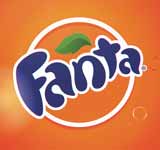
Fanta is a brand of soda with gas, owned by The Coca-Cola Company. It has different packaging formats (bottles, cans, etc.) and multiple flavors. Among them, the most traditional is orange and lemon, although there are more than 90 different varieties of Fanta worldwide. Fanta was created in 1940, during World War II. Max Keith, who led the operations of Coca-Cola (GmbH) in Nazi Germany during the war, had problems when the US government banned multinationals from trading with Germany. To this was added that in the middle of World War II, the German factories of Coca-Cola could not receive the concentrate of extracts used to create this soda. In order to continue operating and not be forced to close, the factory managers decided to create a new beverage that they could produce with the machines they had, but without the Coca-Cola syrup. And what could they find in the middle of the war? Buttermilk And it was based on the new soda. To solve it, Coca-Cola changed the name of its factories, to make them independent and continue to make profits. Thus Fanta was born exclusively for the German market, and proved to be a success. When Coca-Cola (GmbH) was restored after the war in the European market, it bought the brand.
4. Mirinda
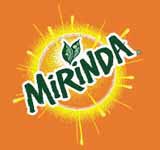
Mirinda is a soft drink originally created in Spain, but distributed worldwide by the PepsiCo Company, available in a wide variety of fruit flavors: lemon, orange, grapefruit, apple, strawberry, pineapple and grape. The name means "admirable, wonderful" in the Esperanto language, spoken by the creator of the drink. The denomination and its first graphic badge are registered with the Spanish Patent and Trademark Office in 1959. Despite the number of varieties, the orange flavor is probably the one that covers the majority of Mirinda's worldwide sales. However, in some areas, the name Mirinda is more commonly associated with another flavor as in northern Argentina, where the Mirinda apple flavor is the most widely accepted. At least in Spain, tonic was also sold under the Mirinda brand. Mirinda was later bought from its creator by the American multinational company PepsiCo in 1970, and competes with Fanta, from The Coca-Cola Company and Crush, from Cadbury-Schweppes. By 1974 the Pepsico Company financed an advertising campaign on television conducted by the Vara Studios in which Mortadelo and Filemón animated announced the refreshing drink Mirinda. The beverage campaign could also be seen in Bruguera magazines that year. The effigies of some prominent Bruguera characters could be found under the beverage stoppers.
5. 7 Up
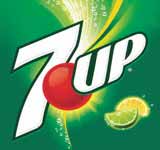
7 Up ("Seven Up") is a brand of drink soda with lemon-lime soda sold in stores, restaurants and vending machines in many countries of the world. Its main competition is Sprite, produced by The Coca-Cola Company. In the United States it is prepared by Dr Pepper Snapple Group. In Argentina the drink is made by Quilmes Brewery and Maltería, owned by Anheuser-Busch InBev. In Colombia it is prepared by Postobón, property of the Ardila Lülle Organization under license from PepsiCo. In the Dominican Republic it is made by the Dominican National Brewery, owned by Anheuser-Busch InBev. In Venezuela it is prepared by Empresas Polar, under license from PepsiCo. InUruguay is produced by National Breweries, under license from Seven Up International. In Mexico it is prepared and distributed by PepsiCo. In Chile it is prepared by the United Brewery Company owned by Heineken NV and Grupo Luksic under license from PepsiCo. Charles Leiper Grigg, who in 1920 founded the Howdy Corporation in St. Louis, invented the 7 Up in 1929. The drink was originally called "Bib-Label Lithiated Lemon-Lime Soda", and was launched two weeks before the collapse from Wall Street in 1929. Initially contained lithium citrate (removed in 1950), and for this reason it was used as a medicine for the treatment of the consequences of drunkenness.
6. Banta
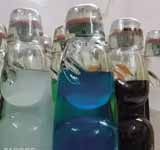
Banta or Banta Soda (also known as Kanche ki Bottle), is a colloquial term for a carbonated lemon or orange-flavored soft drink in a Codd-neck bottle popular in India. Though the source of its name is from the Punjabi word for sandstone (banta), this drink has been sold since the late 19th century, long before well-liked carbonated drinks arrived. The drink is often sold mixed with lemon juice, crushed ice, black salt, chaat and masala as a carbonated variant of well-liked lemonades shikanjvi or jal-jeera. It is accessible at street-sellers known as bantawallahs at prices ranging from ₹5 (7.0¢ US) - ₹30 (42¢ US). The Codd neck bottle was designed and manufactured to accommodate a glass ball and a rubber washer on its neck. The bottles were filled in inverted, and the gas pressure in the bottle pushed the ball against the washer, sealing the gases contained in the drink. The bottle was shaped with a special shape, as seen in the attached photo, in order to provide a chamber to which the ball was moved with an instrument to open the bottle. This prevented the ball from blocking the neck when the drink was served.
7. Campa Cola
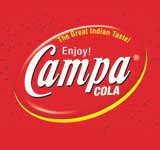
Campa Cola is a cola brand in India. In certain areas, it was the market leader for a few years, until Pepsi and Coca-Cola took over after the liberalization policy of the Narasimha Rao government in 1991. Campa Cola was created by the Pure Drinks Group in 1977. The Pure Drinks Group was a pioneer in the Indian soft drink market that had already brought Coca-Cola to India in 1949. They were the only producer and distributor of this brand until Coca-Cola was asked to leave the country in 1977. The Pure Drinks Group and Campa Beverages then practically held a monopoly position for 20 years and introduced Campa Cola in the absence of any foreign competition. Many said that Campa Cola only resembled the competitors only in terms of color, but that it was a totally different drink in terms of taste. Campa Cola's main competitor was Thums Up. The brand ceased to exist in 2000 after it could no longer compete with the foreign brands. In 2003, another producer, Satya Beverages and Distilleries, re-launched it. Said Campa Cola still appealed to the imagination and hoped to be successful again. At the launch of Campa Cola they even said that they already had a large market share in Haryana and Rajasthan. The Pure Drinks Group is one of the largest companies in India. After the production of soft drinks, people also started focusing on construction, hotels and telecommunications. It is one of the largest real estate owners in India.
8. Frooti
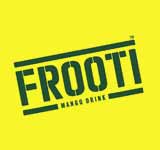
Frooti or Mengo Frutti, by which it is popular, is the best-selling mango flavored drink in India. It is the most excellent product offered by Parle Agro India Private Limited and is also the most successful beverage of this company. The drink was launched in 1985 with the Tetra pack package. It is also now available in PET bottles and rectangular packs. Frutti America, Canada, UK, United Arab Emirates, Saudi Arabia, Malaysia, Maldives, Singapore, Thailand, New Zealand, Australia, Mozambique, Congo, Ghana, Malawi, Exports to Zambia, Nigeria, Tanzania, Japan, Ireland, etc. The drink consists of mango pulp, water, sugar, citric acid, ascorbic acid and a substance added to flavor and approved color. Frooti was introduced as a mango beverage served in a green rectangular tetrapec. Although it was not the first mango drink, Frooti soon gained a large market share. Packaging has played a major role behind its success, as it can be carried with ease and convenience. Frooti gives a refreshing taste of mango, which has converted it into a huge demand. The tagline "Mango Frutti, Fresh and Juicy", helped strengthen the brand and strengthen its position as a leader.
9. Full Throttle
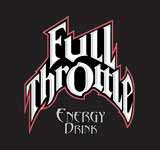
Full Throttle is an energy drink brand produced by The Coca-Cola Company and Monster Energy. In late 2004 it entered the United States and Canada under the former owner The Coca-Cola Company. It is known for sponsoring National Hot Rod Association competitions between 2008 and 2012. On June 12, 2015, Monster Beverage signed an agreement to buy The Coca-Cola Company's energy beverage line. Coca-Cola handed over ownership of all power businesses worldwide, including NOS, Full Throttle, and nine small brands to Monster. Monster, all its businesses except energy drink, Hansen's natural carbonated drinks, Peace Iced Tea was transferred to Coca-Cola, including Hubert's Lemonade and Hansen's juice products.
10. Limca
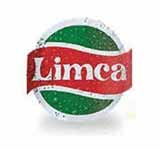
Limca is a lemon and lime flavored soft drink made by The Coca-Cola Company. Limca is produced and sold mainly in India. Limca is a beverage launched by Parle Agro in 1971. The Limca brand was purchased by Coca-Cola Company along with many other products made by Parle Agro in 1993. The purchase price was $40 million. Limca is a soft drink that is popular with consumers in its main market area. Its biggest competitors are the similar drinks Sprite, 7 up and Mirinda lemon variant. Limca is a lemon and lime flavored carbonated soft drink made in India and parts of the USA and contains 60 calories per 150 ml can. The formula does not contain fruit based on artificial flavors. In a 2008 interview, Parle Bisleri announced that he was approaching the owners of Ramesh Chauhan, Duke's Lemonade and Duke's Mangola, and asked him to share the formula for drinking with the promise of non-return in India. In 1977, Chauhan decided to find his own formula, which was released under the Limca brand. In 1992 the government of India Coca-Cola when he accepted Pepsi for the first time, he bought local soft drink brands from Ramesh Chauhan, owner of Parle Biscuits, including Coca-Cola Limca. These belonged to Thums Up (a cola-like drink), Maaza (a mango juice-based drink), Citra (a lemon drink with light lemon) and Gold Spot (Orange aroma).
11. Maaza
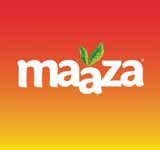
Maaza is a Coca-Cola fruit drink brand from India, offered by The Coca-Cola Company. It is marketed in the Middle East, Africa, Eastern Europe and Asia and is the most popular beverage mango variety, so many years that it is synonymous with the Maaza brand Mango. Initially, Coca-Cola introduced Maaza as orange and pineapple varieties, but these variants fell later. Coca-Cola recently re-launched these derivatives in the Indian market. The store has a distinct flavor compared to Frooti and is slightly sweeter than Slice. Maaza claims that Alphonso, known as the "King of Mangos" in India, contains mango extract. Mazza is a Coca-Cola product that is very popular in Middle East Africa, Eastern Europe and Asia. It was first built in 1977. Mazza also opened pineapple and orange branches but could not succeed so much. Many of Mazza's commercials were shown on television. Advertisements are shown in India under the name of "Har Mausam Aam (All Weather Mango)".
12. Monster Energy
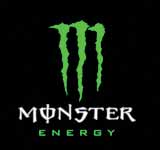
Monster Energy (or simply called Monster) is an energy drink that was launched by Hansen Natural in 2002. The logo represents a triple scratch. The range includes energy drinks with various fruity aromas and non-carbonated drinks based on tea and taurine. Hansen Natural markets and distributes Hansen's Energy, Hansen's Energy Pro, and Hansen’s Energy Diet Red. Today it's Monster Beverage of Corona (California) that manufactures energy, carbonated and fruit drinks, including Monster Energy, Monster Rehab, Monster Java and Monster Nitrous. Monster Energy mainly sponsors auto/motorcycle sports (WRC, Moto GP, BMX...), but it also sponsors, for example, music groups, such as the Las Vegas group Five Finger Death Punch and the major division of the Professional Bull Riders named "Unleash the Beast Series" (UTB). Monster also manufactures clothing and accessories bearing the logo of the brand. Hansen Natural Corporation in 2007 announced a distribution contract with PepsiCo Canada. Since January 2009, Hansen Natural Corporation has announced a distribution contract with Coca-Cola Bottling Company. In august 2014, Coca Cola acquires 16.7% of Monster Beverage Corporation, which notably distributes the Monster Energy drink, for $2.15 billion.
13. Pepsi
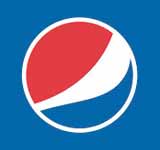
Pepsi, also known as Pepsi-Cola, is a carbonated soft drink originating in the United States and produced by the company PepsiCo. Its biggest competitor is also the American Coca-Cola. Pepsi first appeared in 1893. Its inventor was the pharmaceutical chemist Caleb Bradham, who prepared and sold the beverage in his pharmacy in the US town of New Bern (North Carolina). Known at the beginning as Brad Drink (in Spanish: Brad's Soft Drink), in 1898 its creator named it Pepsi Cola, alluding to the digestive enzyme pepsin and cola nuts used in the recipe. The goal of Bradham was to create a delicious drink to help digestion and was a stimulant. In 1902, he requested the registration of the brand and founded a company with ninety-seven capital shares. In 1903 he moved the bottling plant to a warehouse he rented for this purpose. That same year he sold 30,162 liters of concentrate. The following year, he began using 177 milliliter bottles and sales amounted to 75,133 liters. In 1909 the racing driver Barney Oldfield was the first famous to promote the drink, describing it as "a brave drink... refreshing, strengthening, a pleasant stimulant to prepare for a race." The "delicious and healthy" advertising slogan was in use for two decades.
14. RC Cola
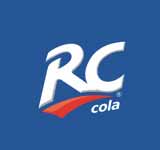
RC Cola (full name: Royal Crown Cola) is an American cola brand that was started in 1905 by pharmacist Claude A. Hatcher from Columbus (Georgia). In supermarkets of the Wal-Mart chain it is sold under the name Sam's Choice Cola. The first product from the Royal Crown line was "Chero-Cola" in 1905, followed by Royal Crown Ginger Ale, Royal Crown Strawberry and Royal Crown Root Beer. The company was then renamed to Chero-Cola, and again to Nehi Corporation in 1925. In 1934 the recipe from Chero-Cola was rewritten and the drink was re-released under the original name Royal Crown Cola. In 1958 the company introduced the first light cola (Diet Rite Cola), and later also the first caffeine-free cola, "RC 100". Royal Crown was taken over by Cadbury Schweppes in October 2000. RC Cola is produced in Suriname by Rudisa international. RCCOLA or even Royal Crown Cola was in the seventies and eighties an alternative product to Coca-Cola and Pepsi-Cola which at that time almost held a monopoly on the sales of a product of those characteristics. Its taste, quite similar to that of the aforementioned drinks, has been very successful for several years and has created its own market "niche", it was then imitated by other manufacturing companies that put on the market completely similar brands in name, more dissimilar in taste.
15. Sprite
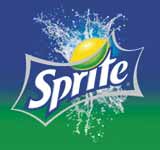
Sprite is a famous world-renowned brand of lemon-flavored and non- caffeinated soft drink produced in 1961 by the company "The Coca-Cola Company" (In Mexico it was in 1959 under the name Clara Sanchez Fanta Limón Claro before being renamed). It was Coca-Cola's response to the popularity of 7Up, which began as "Lithiated Lemon" in 1929. Sprite is currently sold in more than 190 countries. The transparent Sprite bottles are green (without color for its Zero version and some returnable bottles, with the exception of the glass ones) while the cans have green, blue, yellow and silver colors. In the 1980s, many years after its introduction, Coca-Cola pressured its largest bottling companies, which distributed 7 Up, to replace the competition with its own product. Thanks in large part to the strength of the Coca-Cola bottlers system, Sprite managed to lead sales in the lime-lemon soft drink market in 1989. Sprite Light was launched in 1974 and although Sprite sales have not stopped growing since 1998, the Coca-Cola Company decided to rename Sprite Light to "Sprite Zero", as an effort to increase sales. In Venezuela this drink was sold until 1997, when it is absorbed by its similar Chinotto. This last brand is owned by Hit de Venezuela, which was acquired by Coca-Cola.
16. Squirt
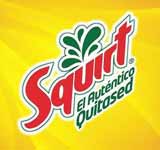
Squirt is a decaf, grapefruit-flavored, non-alcoholic beverage created in 1938 in Phoenix, Arizona. Squirt is naturally flavored, but contains less than 1% grapefruit juice. Like many other soft drinks, Squirt's packaging has changed over the years. In 2008 Squirt Citrus Power was introduced. Unlike normal Squirt, Squirt Citrus Power does not contain caffeinated, concentrated grapefruit juice and contains taurine and other substances similar to an energy drink.
17. Thums Up
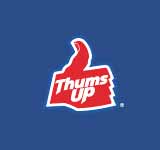
Thums Up is a cola brand that is very popular in India, where the red "thumb-up" logo is also well known. In terms of taste it is very similar to other colas, although it has a unique after taste with betel nut characteristics. Thums Up was introduced in 1977 with the aim of expelling Coca-Cola and other foreign brands from the country. Together with brands such as Limca and Campa Cola, it became a national success. However, the brand was later bought by Coca-Cola, which in turn reintroduced it to compete with Pepsi. The brand was created in 1977 by the company Parle Products Pvt. Ltd. of Bombay, after the expulsion of The Coca-Cola Company from the country. She held a virtual monopoly in India until the entry of Pepsi-Cola in 1990, then the return of Coca-Cola in 1993. At that time, Parle sold the brand to Coca-Cola for approximately 60 million dollars. At first, The Coca-Cola Company tried to kill Thums Up by ceasing all advertising investment for its benefit, but noting that its disappearance would also benefit Pepsi, ended by re-launching it as an "adult" drink, with a strong taste. Even today, Thums Up is the leading cola in India in terms of market share.
18. Tropicana Tw!ster Soda
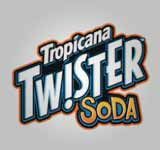
Tropicana is an American food company of the PepsiCo group specialized in the field of fruit juices. It is also the premium brand under which its products are sold. The company's headquarters are in Chicago. The company was founded in 1947 by Anthony T. Rossi, an Italian immigrant, originally with fifty employees. Based in Bradenton in Florida (United States) until 2004 (year of its transfer decided by PepsiCo in Chicago), Tropicana had at that time around 8,000 employees worldwide. The brand is in second position behind Coca-Cola but ahead of Evian on the market for soft drinks without alcohol, in France, it represents 40% of the fresh fruit juice market, opposite Andros, Innocent and Minute Maid from Coca-Cola and Pampryl, Pulco and Sunny Delight from Orangina Suntory France. Tropicana is the no. 1 worldwide in the market for fruit juice. After harvest, the fruits are pressed within 24 hours. After pressing, the fruits, transformed into juice, are bottled according to ISO 14001 certification (bottles containing 50% recycled PET) and then packaged (packaging certified FSC - Forest Council Alliance, since 2010).
19. Coca-Cola
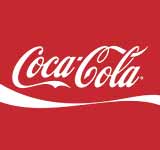
Coca-Cola, commonly known as Coke, is a refreshing soft drink sold worldwide in stores, restaurants and vending machines in more than two hundred countries and territories. It is a product of The Coca-Cola Company. Initially, when invented by the pharmacist John Pemberton, it was conceived as a patented medicinal beverage, although it was subsequently acquired by businessman Asa Griggs Candler, who made the beverage one of the most consumed of the 20th century, and the 21st century. The company produces a concentrate that it then sells to several licensed bottling companies, which mix the concentrate with filtered water and sweeteners to subsequently sell and distribute the beverage in cans and plastic or glass bottles in stores. There are also variants, manufactured by the same company, such as Coca-Cola Light and Coca-Cola Diet; others are Coca-Cola without caffeine, Coca-Cola Cherry, Coca-Cola Coca-Cola Zero, among others specially launched, such as lemon flavor. It is the most bought brand worldwide, and its biggest competitor is Pepsi, also an American drink. Among other things, in addition to the predominant red color in its labels, it is also recognized thanks to its stylized bottle, presented in 1915, whose design remains exclusive to the product, in almost all the ways in which it is offered.
20. Diet Coke
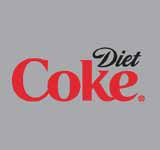
Diet Coke (or Coca-Cola Light) is a version of Coke without sugar or calories, known in the United States and in other English-speaking countries under the brand Diet Coke, in Quebec Canada as Coke diets and in Japan as No Calorie Coca-Cola. Introduced in Italy in 1983 with the Diet Coke brand, it takes the name Coca-Cola Light in 1991, since 2007 a further version has been available, which seems to have been created for male consumers, named Coca-Cola Zero. Coca-Cola Light is low in calories because particular artificial sweeteners are used in its production: Acesulfame K and Aspartame. In the United States, the product appeared on July 8, 1982. Since 1986, it has already been available in 61 countries. In 2003, the drink was available in 146 countries: in 103 - Diet Coke, and in 43 - Coca-Cola Light. In December 2016, it was decided to replace Coca-Cola Light with Coca-Cola Zero. 330 ml of the drink contains less than 1 calorie. Coca-Cola Zero is a special version of Coca-Cola with aspartame. Unlike Coca-Cola Light, it is made based on the original Coca-Cola recipe. It appeared on the market in 2005 in the USA. Also, since 2008 it is available in Australia, New Zealand, Canada, Japan, Germany, Spain, Great Britain, Sweden, Norway, Finland, Belgium, Greece, Turkey, Italy, Poland, Croatia, Ukraine, and appeared in Russia on May 25, 2015.

